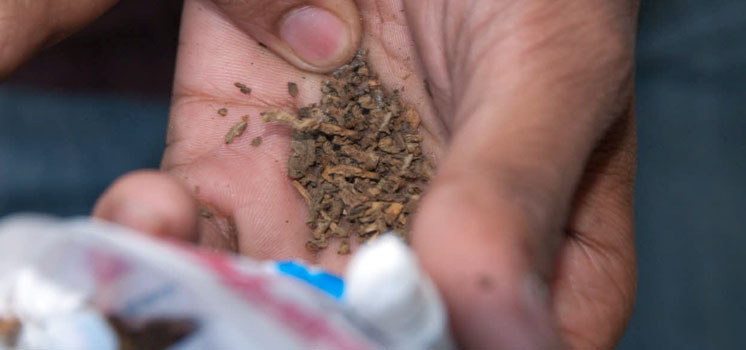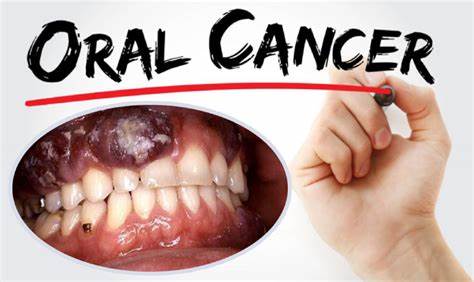India is facing a significant health crisis due to oral cancer, particularly linked to the use of smokeless tobacco and areca nut (commonly known as betel nut). A recent study published in The Lancet Oncology highlights the alarming statistics surrounding this issue: India accounted for 83,400 out of 120,200 global cases of oral cancer attributed to these substances in 2022. This staggering figure positions India at the forefront of a growing public health concern, especially in South Asia, where the prevalence of smokeless tobacco and areca nut use is exceptionally high.
The Global Context of Oral Cancer
According to the study, smokeless tobacco is responsible for over 30% of all oral cancer cases worldwide. The regions most affected by oral cancers related to smokeless tobacco and areca nut use include South-Central Asia, which recorded a total of 105,500 cases. In this region, India stood out as the country with the highest burden of disease, followed by Bangladesh (9,700 cases), Pakistan (8,900 cases), and Sri Lanka (1,300 cases). The situation is similarly dire in Southeast Asia, with 3,900 cases reported (1,600 in Myanmar, 990 in Indonesia, and 785 in Thailand), and East Asia, where 3,300 cases were recorded, predominantly in China (3,200 cases).
Understanding the Factors Contributing to High Oral Cancer Rates in India
India’s troubling statistics can be attributed to several factors. Dr. Pankaj Chaturvedi, a prominent head and neck cancer surgeon and director at the Tata Memorial Centre, highlights the “free accessibility” and “intense surrogate marketing” of smokeless tobacco and areca nut products. Despite the low revenue generated for the government from these substances, the health impact and associated healthcare costs are substantial. Dr. Chaturvedi refers to the ban on gutkha, a popular smokeless tobacco product, as a courageous step that has been undermined by the tobacco industry’s circumvention strategies.
The areca nut industry poses additional concerns. Dr. Chaturvedi points out that this industry has engaged celebrities, particularly in Bollywood, to promote products like paan masala, which is misleadingly marketed as a harmless mouth freshener. However, areca nut consumption is linked to a painful condition known as submucous fibrosis, alongside its association with mouth cancer. This condition can have devastating effects on individuals, particularly among the youth, leading to emotional and financial hardship for families. There is a pressing need for stricter enforcement of existing laws and regulations aimed at controlling smokeless tobacco and areca nut use.
The Significance of the Study
The study underscores the global prevalence of smokeless tobacco and areca nut consumption. An estimated 300 million people use smokeless tobacco, while around 600 million people consume areca nut. The highest rates of use are found in South-Central Asia, Southeast Asia, and Melanesia. Given these statistics, the urgency of addressing this public health crisis cannot be overstated.
What Are Smokeless Tobacco Products?
Smokeless tobacco products are consumed without the burning process typical of traditional tobacco use. They can be chewed, sucked, inhaled, or ingested. The most common forms include:
Gutkha: A mixture of tobacco, crushed areca nut, flavorings, and spices, typically placed between the gum and cheek and chewed.
Khaini: Made from sun-dried or fermented coarsely cut tobacco leaves, often mixed with lime.
Paan Masala: A blend of areca nut, tobacco, lime, catechu, and spices.
These products are widely available and consumed in various forms, making it challenging to combat their use effectively.
Gender Disparities in Oral Cancer Cases
Globally, the burden of oral cancer cases linked to smokeless tobacco and areca nut use disproportionately affects men. The study indicates that approximately 77% of these cases (92,600) were among men, while 23% (27,600 cases) were among women. Generally, men are the predominant consumers of these products; however, exceptions exist in regions like southern Africa and Southeast Asia, where the prevalence among women surpasses that of men.
In India specifically, the consumption patterns reveal concerning trends. Among women, areca nut (30%) and betel quid with tobacco (28%) account for the largest shares of oral cancer cases, followed closely by gutkha (21%) and khaini (21%). For men, the most significant contributors to oral cancer cases are khaini (47%), gutkha (43%), betel quid with tobacco (33%), and areca nut (32%).
The Way Forward
Addressing this public health crisis requires a multifaceted approach. First, there needs to be a concerted effort to enforce existing regulations surrounding the sale and marketing of smokeless tobacco and areca nut products. This includes restricting advertising practices that glamorize these substances, especially those targeting vulnerable populations such as young people.
Public awareness campaigns should aim to educate the population about the severe health risks associated with smokeless tobacco and areca nut use. By providing clear information on the dangers of these products, communities can become better equipped to make informed choices about their health.
Furthermore, there should be a push for research into effective cessation programs for individuals struggling with addiction to these products. Support systems and healthcare services must be established to assist those looking to quit, as overcoming addiction can be a significant barrier to reducing the prevalence of oral cancer.
India’s alarming statistics on oral cancer related to smokeless tobacco and areca nut use reflect a broader public health challenge in South Asia. The need for immediate action is critical to reduce the burden of this disease and protect future generations. By enforcing regulations, raising public awareness, and providing support for cessation, India can work towards a healthier future, free from the devastating impacts of oral cancer.



